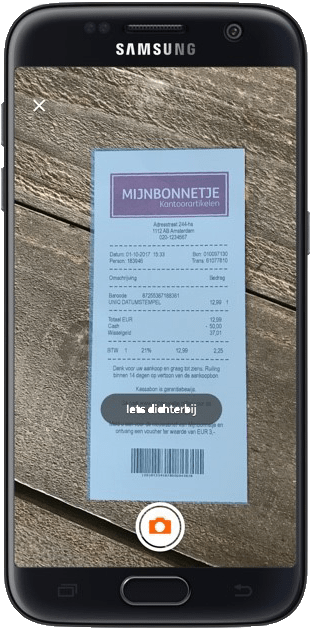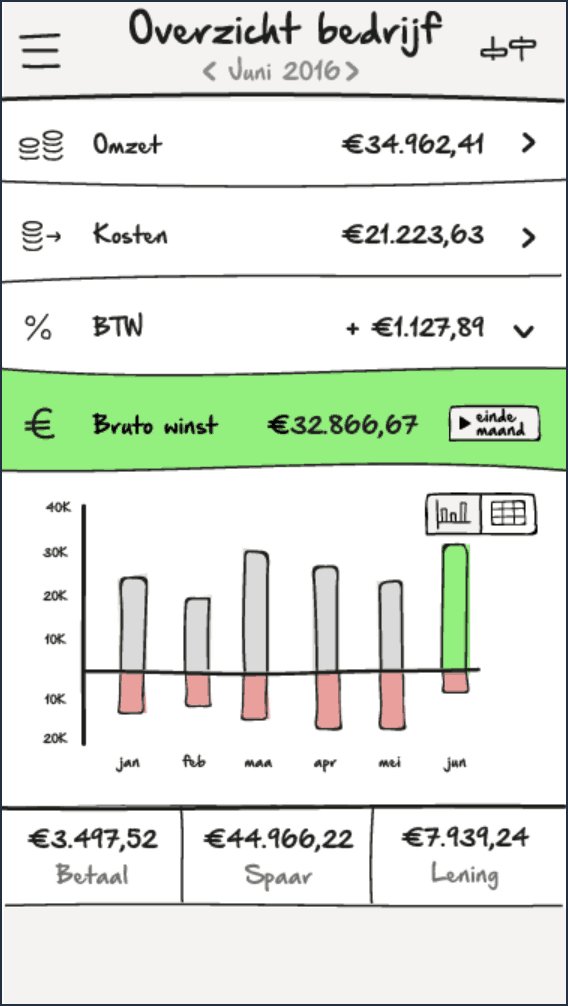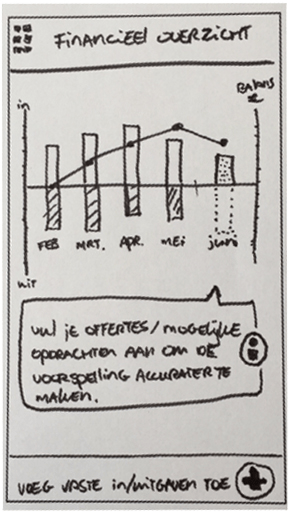Year
2016
Methodologies
- Service Design
- User Experience Design
- Prototyping
- Lean Startup
Deliverables
- Testable mock-up app
- Research documents
- Persona’s, Customer Journeys
There is a lot of potential for banks to create (better) services that addresses SME’s needs.
Unfortunately, SME’s (Small- and Medium-sized Enterprises) are currently underserved and misunderstood by most banks. This target group faces a lot of challenges in running their company, especially when it comes to finances. Many entrepreneurs started their business to follow their dreams and want to spend as little time as possible on their finances or bookkeeping. This creates interesting possibilities for banks to provide new and innovative services.
THE APPROACH
Crafting a unique banking experience using human centered design and lean startup methodologies
In the project a variety of different methodologies were applied. Human centered design and service design helped creating an understanding of possible users and helped shape the solution. In incremental steps we worked towards a solution, continuously involving real people. Using lean startup methodologies we validated interest and intent to to de-risk development. In this process several landing page experiments with google-and facebook-ad campaigns were run.
The result
The result is Bonnen&Facturen, a simple to use feature that helps entrepreneurs in managing their expenses in a structured and user friendly way. The feature was added to the existing ING banking app for business clients in the Netherlands (±600.000 customers).
My role 1/3
My role as Service Designer
My main role was that of Service Designer. My responsibilities were; leading the research, creating the materials, synthesising the research insights and defining opportunity areas. Secondary, I had the role of facilitator. I organised workshops and co-creation sessions but also guided the team through the development process, from uncovering user needs to designing the solution. This also covers training team members in user research and facilitating workshops such as synthesising user insights.



My role 2/3
Defining the target group and iterating on solutions
After creating clear persona’s and customer journeys, we started moving towards possible solutions. My role shifted towards designing, prototyping and testing functionalities. In this phase I worked closely together with a visual designer to translate my low fidelity UX designs to more high fidelity designs.
My role 3/3
Delivering the service
In the last phase I helped creating a narrative for different stakeholders and C-level management. Towards later stages of the project, we increasingly involved organisational stakeholders such as business and IT to facilitate implementation and reduce resistance to change. With a scoped MVP and future releases planned, finally business and IT-teams took over responsibility and further developed the product.


